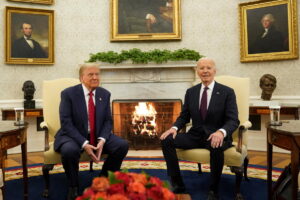The FTC’s Stricter Merger Guidelines: What Investors Need to Know
In a strategic move that signals the continuation of rigorous merger enforcement, the new Federal Trade Commission (FTC) chairman Andrew Ferguson has announced that he will uphold the stricter merger guidelines established during the Biden administration. This decision highlights a significant shift in how mergers and acquisitions (M&As) are scrutinized in the U.S., and it’s essential for investors and companies to stay informed.
New Guidelines as a Framework
Ferguson took to X (formerly Twitter) to inform FTC staff that the current merger guidelines will serve as the foundational framework for future merger analyses. This is critical for businesses planning M&A activities, as the increased scrutiny may affect their strategic decisions. It’s noteworthy that while these guidelines are not legally binding, they will heavily influence how mergers are evaluated, making it crucial for firms to align their strategies accordingly.
A Bipartisan Approach to Antitrust
The guidelines were initially crafted under the leadership of Lina Khan, a figure who often drew attention for her aggressive stance on antitrust issues. One significant shift introduced by these guidelines includes a broader interpretation of what constitutes an antitrust violation. For instance, they lower thresholds for presuming that a proposed merger could infringe on antitrust laws and even delve into labor market impacts—an area previously overlooked.
Moreover, the focus on consumer welfare as the primary metric for evaluating mergers has been diminished, marking a departure from historical frameworks. Insights from industry experts like University of Tennessee College of Law professor Maurice Stucke suggest that this reflects a recalibration of antitrust enforcement across party lines, consolidating support for a more aggressive approach to mergers.
Historical Context: Comparing Trumps and Biden’s Antitrust Actions
Looking back at merger challenges brought forth by the Department of Justice (DOJ) and FTC, it’s interesting to note that during Trump’s three years in office, the two agencies filed 118 M&A challenges. This figure exceeds the 108 challenges recorded during Biden’s initial three years. However, it’s worth noting that Biden’s administration achieved a milestone, registering the highest annual total of 50 merger challenges in fiscal 2022, a record not seen in over two decades.
It’s clear that regardless of administration, the landscape of antitrust enforcement is changing. As Ferguson mentioned, "Even though antitrust may not be the same under Trump as it is under Biden, it’s not going to go back to the way it was." This underlines a commitment to continued vigilance against monopolistic practices.
Implications for Future Mergers
Ferguson’s FTC has already made its presence known with legal actions, such as the ongoing lawsuit to block Hewlett Packard Enterprise’s $14 billion acquisition of Juniper Networks. The DOJ’s concerns focus on how this merger could significantly reduce competition in the enterprise wireless networking sector.
What does this mean for your investment decisions? Companies involved in potential mergers should assess their compliance with these new guidelines to avoid delays or rejections. Investors must remain vigilant about these regulatory trends, as they can heavily influence market dynamics and the attractiveness of certain sectors.
Stay Ahead of Regulatory Changes
As the Extreme Investor Network, we believe that staying informed and proactive is key to navigating the complexities of the current financial environment. Understanding the implications of these strengthened merger guidelines can help you make more informed investment decisions, allowing you to position your portfolio effectively amidst evolving regulatory landscapes.
Keep your eyes peeled for further developments in antitrust enforcement—adjustments in strategy now could save companies from potential pitfalls in the future.

